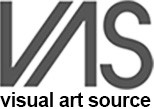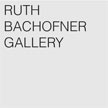In his second exhibition at Ruth Bachofner Gallery, Phillip Griswold ventures into more abstract territory, using what he calls "geometric superstructures and abstract brushwork" to assemble imagery in his works. In these new works, light fills the enigmatic urban landscapes in deliberate and intricate ways. Lines, planes and polygonal forms interrupt these landscape spaces, altering them in ways invocative of modernism, mathematics, and patterns found in nature, especially light refraction. Light expresses different effects when it passes through objects at different angles, and he is interested in the relationship of those angles to Euclidian geometric space: the architecture of light. All of these geometric forms come back to the lozenge shape, which remains an integral component in Griswold's paintings.
In these new works, Griswold moves away from the representational nature of his older works. The focus of his paintings shifts from interpretations of real life discernible places and scenes to the quietly arranging and rearranging forms within the paintings. The movement and fluidity of these forms create a balance between the landscapes, the space within the painting, and the geometric shapes. Griswold's new paintings emphasize the reflective nature of the lozenge by including the same colors in the painterly brushtstrokes of the representational parts of the work as in the sharp polygonal shapes. It is as if the light of the landscapes is refracting through these geometric forms. The abstract and representational elements within each work come together to create a cohesive and harmonious balance in both the individual paintings and the show as a whole.
Phillip Griswold received his MFA From Claremont Graduate University and lives and works in Los Angeles.
In her current body of work, Jane Park Wells continues her long-standing approach of working within the parameters of self-imposed systems, particularly the grid. Wells previously employed this framework as a vehicle for exploring cadences in music, rhythms in Korean dance and growth structures in trees and vines. For this series, she returns to nature via the inspirations of Gyorgy Doczi's "The Power of Limits," which has been a strong influence on Wells throughout her career. The book explores the underlying order frequently present in nature, and subsequently in art, architecture and design over centuries.
For this series, Wells places more emphasis on underpainting and creating additional layers and means of connectivity between the panels.
The paintings in Return to Roots essentially revisit her modular Vine series, a project that has evolved over a 20 year period, and is here expanded upon on in approach, scale, and medium. Working on panels that range in size from 15" squares to 24" squares, each piece holds a network of undulating lines that weave over and in between fields of color. The linear movements are guided by the constraints of a grid, but never quite resolve into regularity. While the lines connect from one panel to the next, they break out from the structure in which they were created and take on the improvised quality of painterly gestures. In this particular series, Wells places more emphasis on underpainting and creating additional layers. As a result, a loose, spirited rhythm throughout each of four distinct installations. As her formal strategies shift, Wells sets up both a creative and visual challenge that is at once playful and ardent in approach.
Jane Park Wells received her art education from Scripps College (BFA) and Claremont Graduate University (MFA).






